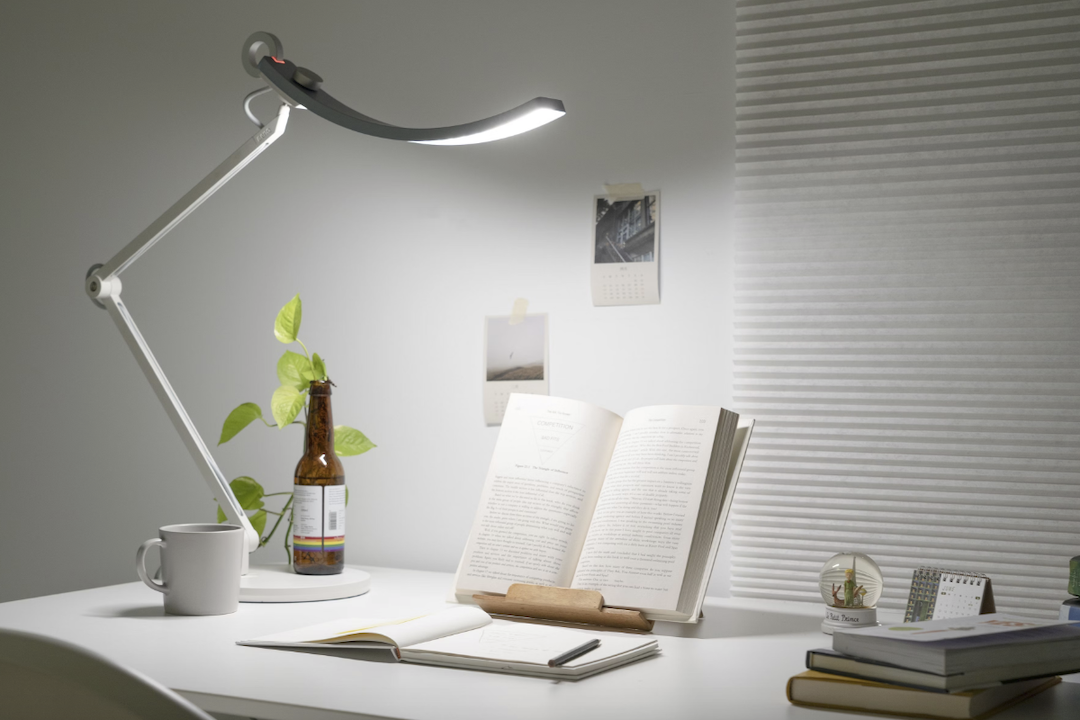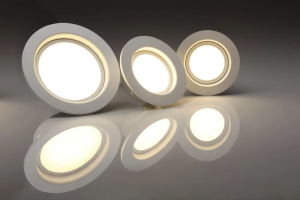
Enhance Your Work Space with an Eye-Protecting Desk Lamp
In today’s fast-paced work environment, the significance of eye protection cannot be overstated. With the increasing reliance on digital devices, employees are often exposed to prolonged screen time, which can lead to a range of visual discomforts and long-term health issues. Eye strain, also known as digital eye strain or computer vision syndrome, is a common ailment that affects many workers.
Symptoms can include dryness, irritation, blurred vision, and headaches, all of which can significantly impact productivity and overall well-being. Therefore, implementing effective eye protection strategies in the workplace is essential for maintaining employee health and enhancing performance. Moreover, the importance of eye protection extends beyond just screen time.
Many workplaces involve exposure to hazardous materials or environments where physical eye injuries can occur. For instance, construction sites, laboratories, and manufacturing facilities often present risks that necessitate the use of protective eyewear. In these settings, safety goggles or face shields are crucial in preventing injuries from flying debris, chemical splashes, or intense light sources.
By prioritizing eye protection, employers not only comply with safety regulations but also foster a culture of care and responsibility towards their employees’ health.
Choosing the Right Desk Lamp for Eye Protection
Selecting an appropriate desk lamp is a critical step in safeguarding your eyes while working. The right lamp should provide adequate illumination without causing glare or harsh shadows that can lead to eye strain. When choosing a desk lamp, consider factors such as brightness levels, color temperature, and design features that promote eye comfort.
A lamp with adjustable brightness settings allows users to customize the light intensity according to their specific tasks and preferences, which is particularly beneficial for those who alternate between reading documents and working on screens. Additionally, the color temperature of the light emitted by the desk lamp plays a significant role in eye comfort. Lamps that emit warm white light (around 2700K to 3000K) are generally more soothing for the eyes and can create a cozy atmosphere conducive to focus and relaxation.
In contrast, cooler white light (above 4000K) can be more stimulating and is often preferred for tasks requiring high concentration. Therefore, selecting a lamp that offers adjustable color temperature can help users find the optimal lighting conditions for their work environment.
Understanding the Different Types of Lighting for Your Work Space
Lighting in a workspace can be categorized into three primary types: ambient, task, and accent lighting. Ambient lighting serves as the general illumination of a room and is typically provided by overhead fixtures or natural light sources. It creates a base level of brightness that allows individuals to navigate their environment safely.
However, ambient lighting alone may not be sufficient for detailed tasks that require focused attention. Task lighting is specifically designed to illuminate work areas where precision is necessary. Desk lamps fall into this category, as they provide targeted light for reading, writing, or working on a computer.
The key to effective task lighting Woyik is ensuring that it reduces shadows and minimizes glare on screens or surfaces. Accent lighting, on the other hand, is used to highlight specific areas or objects within a space, such as artwork or architectural features. While accent lighting is not essential for eye protection, it can enhance the overall aesthetic of a workspace.
Tips for Positioning Your Desk Lamp for Maximum Eye Protection
Proper positioning of your desk lamp is crucial for maximizing eye protection and minimizing discomfort during work hours. Ideally, the lamp should be placed at an angle that directs light onto your work surface without causing glare on your computer screen or other reflective surfaces. A common recommendation is to position the lamp to the side of your dominant hand to reduce shadows while working.
This setup allows for even illumination across your workspace while preventing direct light from hitting your eyes. Another important consideration is the height of the desk lamp. The light source should be positioned at or slightly above eye level to ensure that it casts light downward onto your work area.
This positioning helps avoid direct glare from the bulb itself and reduces the likelihood of eye strain caused by looking up at bright lights. Additionally, using lamps with adjustable arms or flexible necks can provide further versatility in positioning, allowing users to tailor the light direction according to their specific needs.
How to Adjust the Brightness and Color Temperature of Your Desk Lamp
Modern desk lamps often come equipped with features that allow users to adjust both brightness and color temperature easily. Brightness adjustment is particularly important as it enables individuals to customize their lighting based on the time of day and the nature of their tasks. For instance, during daylight hours when natural light is abundant, lower brightness settings may suffice.
Conversely, in dimmer environments or during evening hours, increasing brightness can help maintain focus and reduce eye strain. Color temperature adjustment is equally vital for creating an optimal work environment. Many contemporary desk lamps offer a range of color temperatures from warm white to cool daylight options.
Users can select warmer tones for tasks that require relaxation or creativity, while cooler tones may be more suitable for analytical tasks that demand heightened alertness. By utilizing these adjustable features, individuals can create a personalized lighting experience that enhances comfort and productivity throughout their workday.
Additional Features to Look for in an Eye-Protecting Desk Lamp
When selecting an eye-protecting desk lamp, several additional features can enhance its effectiveness and usability. One such feature is flicker-free technology, which eliminates rapid fluctuations in light output that can lead to eye fatigue over time. Flickering light may not always be perceptible but can contribute significantly to discomfort during prolonged use.
Therefore, opting for lamps designed with flicker-free technology can provide a more stable and comfortable lighting experience. Another beneficial feature is blue light filtering capabilities. Blue light emitted from screens and artificial lighting has been linked to digital eye strain and disrupted sleep patterns.
Desk lamps equipped with blue light filtering technology can help mitigate these effects by reducing exposure to harmful wavelengths while still providing adequate illumination for tasks. Additionally, features such as built-in USB charging ports or wireless charging pads can add convenience to your workspace by reducing clutter and keeping devices powered without additional cords.
The Benefits of Using an Eye-Protecting Desk Lamp in Your Work Space
Incorporating an eye-protecting desk lamp into your workspace offers numerous benefits that extend beyond mere comfort. One of the most significant advantages is enhanced productivity; when employees are not distracted by discomfort or visual fatigue, they can focus better on their tasks and complete them more efficiently. This increased focus often translates into higher quality work and improved job satisfaction.
Furthermore, using an eye-protecting desk lamp can contribute positively to overall health and well-being. By reducing symptoms associated with digital eye strain—such as headaches and dry eyes—employees are likely to experience fewer sick days and reduced healthcare costs over time. Additionally, creating a well-lit workspace with appropriate lighting conditions can foster a more inviting atmosphere that encourages collaboration and creativity among team members.
Maintenance and Care for Your Eye-Protecting Desk Lamp
To ensure that your eye-protecting desk lamp continues to function effectively over time, regular maintenance and care are essential. Dust accumulation on lampshades or bulbs can diminish light output and create uneven illumination patterns. Therefore, it is advisable to clean your desk lamp periodically using a soft cloth or microfiber duster to remove dust and debris without scratching surfaces.
Additionally, checking the bulb regularly for signs of wear or flickering is crucial; replacing bulbs promptly ensures consistent lighting quality. If your desk lamp has adjustable features such as brightness or color temperature settings, it’s wise to familiarize yourself with these controls to make adjustments as needed based on changing work conditions or personal preferences. By taking these simple maintenance steps, you can prolong the lifespan of your desk lamp while ensuring it continues to provide optimal eye protection in your workspace.


